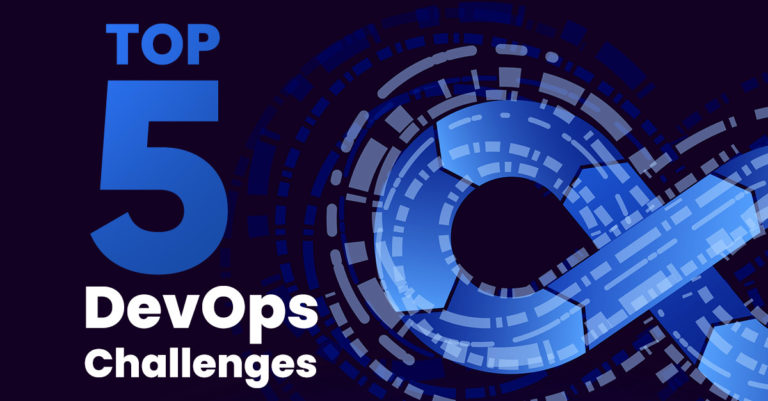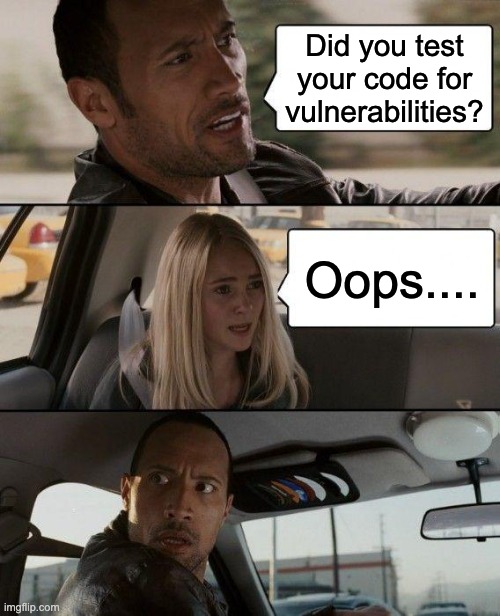
Top 5 DevOps Challenges

Senior Content Manager
DevOps was created to solve a huge cultural problem that was pervasive in the IT and software engineering communities. While both teams were responsible for creating technical products and services, each organization had its own goals, KPIs, and siloed responsibilities which resulted in dysfunctional product release cycles and mediocre technology.
With the launch of DevOps, Developers and Operations have come together with the goals of continuous delivery of innovative products, breaking down silos, and full cycle ownership. And while this practice has matured and prospered over the past 13+ years, there are still many challenges which teams are still experiencing today.
So what are these challenges and how can we overcome them? Read on to find out!
Implementing DevSecOps
With over 98 million consumers impacted by data breaches in 2021 so far, security has become a priority for businesses across the globe. But the questions of who is responsible for security, how it should be implemented, where security fits in the development/release pipeline, and others plague DevOps organizations constantly.
DevSecOps moves security from being a separate process at the end of the development cycle to being fully integrated with development and operations workflows. Since security processes are known to be slow, rigid, and not optimized for DevOps’ agile, cloud-first culture, this shift is incredibly challenging.
Thankfully, the right tools and cultural considerations can help. First, make sure your DevOps team is educated on security best practices so they can more easily test their code for vulnerabilities. There are plenty of courses available from Practical DevSecOps, A Cloud Guru, Cloud Academy, and more.
Next, make sure you put together a framework which puts security best practices and objectives at the forefront of your DevOps pipeline. Your security approach should be multi-layered and involve multiple teams, processes, and protocols at each step. As a part of this, make sure that writing secure code and detecting vulnerabilities is part of DevOps KPIs. This way, there will be more accountability for security from the DevOps team and they will be more accustomed to implementing security into DevOps processes.
Lastly, make sure to put the right DevSecOps tools in place. Tools like Snyk, Whitesource, Checkmarx, and many others are built for CI/CD processes, cloud-native architecture, and DevOps environments.

Hybrid cloud deployments
There are many reasons for embracing hybrid including reducing costs, improving efficiency, etc. But just because hybrid comes with an array of benefits does not mean it is without challenges.
For starters, hybrid cloud security is a complicated animal. By adding the public cloud to the mix, your security is now directed by APIs, and as a result, developers rather than operations will be responsible for its implementation. This can be a tremendous skills gap for many who are not used to these types of tasks. Furthermore, when data is transferred between various clouds, it is extremely vulnerable to malicious actors. Robust encryption can help ensure your data is protected as it travels between various clouds.
Governance and compliance are also challenges for those getting started with hybrid clouds because they are handled differently and managed by different teams depending on if you are working on premises, on private, or on public clouds. This may mean your team lacks experience handling these initiatives, and as a result, they’ll require some training to make it successful.
Complex environments

Today, we’re running on serverless, implementing microservices, and using Kubernetes as well as various other cloud-native tools that help DevOps build and run applications at scale. The drawback of these technologies is they also add a high level of complexity which makes it difficult to build, maintain, and monitor our environments.
Getting visibility into these environments is also a huge challenge for DevOps teams. In fact, Nearly 87% of respondents of Logz.io’s DevOps Pulse survey have shared that their main observability challenges lie in Kubernetes, microservices, and serverless frameworks.
So how do we rise above these challenges? To reduce the complexity while building in modern DevOps environments, leverage infrastructure-as-code tools such as Cloudformation or Terraform. Next, to improve visibility, monitoring tools like DataDog, New Relic, The Elastic Stack, and others can help you understand what’s occurring in your system and optimize its performance.
Unfortunately, there’s no silver bullet for reducing the complexity of DevOps environments, but by using the right tools and working together as a team, the complexity will become less of an obstacle to your success.
Perfecting DevOps culture
DevOps was born out of the need to merge developers and operations to improve product quality, speed of delivery, and overall customer experience.
But merging Dev and Ops is easier said than done. While in the past it was acceptable for developers to write code and for operations to make sure that code works in production, today these roles are blended together to promote full-cycle ownership.
Although this is the standard requirement, removing those silos and actually getting Dev and Ops to work together to achieve common goals is still a challenge. To ensure better cultural adoption, make sure you are clear about each team’s roles and responsibilities and outline specific ways they can leverage each other’s talents and grow as a team. This will help them to understand your organization’s DevOps goals and work together more effectively.
Optimizing cloud costs

DevOps and the cloud are pretty much synonymous nowadays. After all, the cloud’s speed, agility and flexibility are what makes DevOps dreams of continuous delivery possible.
Yet, the cloud comes with a tremendous price tag that can be frustrating to handle for any DevOps professional. In order to manage cloud costs, DevOps need to predict how many resources they’ll use, how much storage they’ll need, how their architecture will change etc. And these factors are completely unpredictable as they are dependent on how many customers are onboarded, which new features are launched, and a variety of other elements that are difficult to forecast.
DevOps may spend hours trying to calculate costs and allocate a budget, only to go over-budget in the end. Worst of all, they’re spending time managing their infrastructure and optimizing it for costs rather than their core objectives of developing new products and services.
So how can you overcome this challenge? Predicting cloud costs is an activity that’s best suited for machines rather than humans. Even the most brilliant mind will have a hard time predicting usage and managing costs without error, but machines can do this flawlessly and in seconds.
By implementing an automated machine learning solution like Zesty’s Commitment Manager for EC2 or Zesty Disk for EBS, you take away the burden of cloud management from your DevOps team and enable them to do what they do best, build innovative products.
Final words
Although DevOps comes with many challenges, the rewards are quite worth the effort. Your features will be delivered faster and at a higher quality, and your customers will be more satisfied than ever.
Plus each of these challenges have solutions which can help you perfect your DevOps culture, security, cloud optimization, and more.
Are you ready to offload cloud management for good? Chat with one of our cloud experts to learn how Zesty makes it possible.
Related Articles
-
 Why it’s time to get off the manual Kubernetes optimization treadmill
Why it’s time to get off the manual Kubernetes optimization treadmill
August 14, 2025 -
 The endless cycle of manual K8s cost optimization is costing you
The endless cycle of manual K8s cost optimization is costing you
July 2, 2025 -
 This is the #1 cloud budget killer (and it’s easier to fix than you think)
This is the #1 cloud budget killer (and it’s easier to fix than you think)
June 16, 2025 -
 K8s users were waiting years for this, and v1.33 just made it real
K8s users were waiting years for this, and v1.33 just made it real
June 12, 2025 -
 Why Most K8s Optimization Strategies Fail (And How to Fix Yours)
Why Most K8s Optimization Strategies Fail (And How to Fix Yours)
May 20, 2025


